DIY Vintage Farmhouse Dining Table - Arhaus Copycat - 804 Sycamore

This vintage farmhouse table was created using two of my favorite DIYer's plans. I came up with the stain color combination and couldn't be happier with how it turned out!
In
DIY Vintage Farmhouse Dining Table – Arhaus copycat
Before I dive into sharing my DIY Vintage Farmhouse Dining Table – Arhaus copycat with you, I think I should begin by admitting to you that I’ve been drooling over the Arhaus Francis Dining Table for quite a while, but I knew the price tag was outside my budget. I searched for copycats, even tables with skinny turn-style legs, with no luck in the price-tag department. Beautiful tables are expensive, this shouldn’t be shocking, but it was disappointing. Ultimately, we decided to purchase a modern farmhouse style table for our daily dining needs (for durability, affordability, and style) and we love that our $800 table extends longer to suit more guests and it has a simple design with a pretty finish. However, I couldn’t stop admiring the Francis from afar, wondering how long before someone may sell one on Marketplace (probably never). That’s when I decided that I could possibly make my own turn-style leg farmhouse table, and maybe even achieve a similar finish to the gorgeous Francis.
Speaking of copycats, Pottery Barn also has a similar designed table, but it’s a console and not large enough to function as a full dining table, and also not in my budget. In my desperate quest to acquire a table like the Arhaus Francis, I also found the Bordeaux by Parker Gwen as well as the Rancher’s dining table by Alley Exchange. These tables are gorgeous, but still out of my budget. With the willingness and determination to DIY my own table, I was able to make a DIY vintage farmhouse dining table – Arhaus copycat for about $350 – that includes all the wood, screws, sandpaper, stains, and wax. I already had some items (i.e., wood conditioner, Kreg pocket hole jig, and other tools). However, it took some time to determine how to get the stain color the exact color and look that I wanted. I tried different stains and in various layers until I finally landed onto an easy process that produces a gorgeous weathered vintage look and color. You could add some aging and distress marks to this table, but I needed my top to have a smooth surface, so I just kept it simple. You could also router the table top edge to get that elegant curve the Arhaus Francis has, but I don’t have that tool yet.
DIY Vintage Farmhouse Dining Table – Arhaus copycat – Examples:
To encourage my dream of having a vintage farmhouse table like the Arhaus Francis, I found the large turn-style legs on Etsy. Maybe they’re elsewhere, possibly at local millwork shops, but I thought I might cry when I found them on Etsy at a great price, by a highly rated seller, and in the exact measurements that would work for my project. It was at that moment that I knew I would build my own table with these legs, even if it was difficult, and I purchased them on the spot. My DIY vintage farmhouse dining table – Arhaus copycat will be used as our games/arts and crafts table upstairs in our bonus space. I wanted a table upstairs that we can leave our projects out on without having to worry about cleaning it all up before dinner. I also wanted a light-weight table that didn’t cost a lot, and looked nicer than one of my plastic six-foot folding tables.
DIY Vintage Farmhouse Dining Table – Arhaus copycat
To further my Arhaus Francis table copycat aspirations, I found two tutorials that I loved and felt confident that I could replicate. A farmhouse table tutorial, by Jen Woodhouse, is what I followed to create the base of my table. And a farmhouse table tutorial, by Ana White, is what I used to create my table top. The whole table isn’t terribly heavy at all, but to make moving it upstairs easier, I waited to attach the top once it went upstairs. It’s much easier to move the two pieces one at a time and it saved my walls from dings. The top is attached using corner braces which also allow the wood to shrink and expand as wood does. This will reduce the chance of the wood splitting and cracking as well. Overall, I’m so happy with the two designs that I selected and feel like they created a very beautiful DIY vintage farmhouse dining table – Arhaus copycat! My YouTube video is published so you can see more details within each step!
One of the things I love about this simple and straight forward table design is that you can customize the width and length for your needs and specifications. Maybe you have a more narrow dining area, or maybe you need a more square table to fit your space – you can customize the measurements and follow the tutorial concepts for your own build. When you DIY your own dining table, you can make all those changes and customize the finish color you want too. Whether you paint or stain a table, you’ll definitely want to seal the top with polyurethane. It cures safely to eat off of, and you can get a satin or glossy finish, depending on your style and needs. I went with satin even though semi-gloss would wipe easier – I wanted that aged vintage look without a modern vibe.
DIY Vintage Farmhouse Dining Table – Arhaus copycat – Tutorials:
Here is the plan I followed to build the base. Moore Family Farmhouse Table Design. However, Jen’s table legs are smaller so I adjusted the location of the legs against the aprons to be one inch from the outside of the leg instead of 3/4″. Otherwise, I followed Jen’s cut instructions to build the base.
And you can view Ana White's YouTube video to see the tutorial to build the light-weight table top using affordable off-the-shelf boards. One of the benefits of using these thinner boards is that they’re already milled and will butt up against each other pretty well. I began my first attempt at the table top using two inch thick boards and they had to be trimmed so that the edges would be flush, and that my friends is easier said than done. I don’t have a planer or joiner, and I’m guessing most of you don’t either. So, that’s why I love Ana’s simple tutorial using off-the-shelf boards. It’s not perfect, it’s not exact, but these boards are pretty darn close and do the job for my DIY vintage farmhouse dining table – Arhaus copycat version – I mean it’s supposed to look vintage and farmhouse so it shouldn’t be perfect, right?! These boards are so much lighter as well – it really worked out for the best.
Jen Woodhouse and Ana White are master woodworkers and DIYers that I greatly admire and look up to. They’re talented and have taught me a lot on my DIY journey. Be sure to check out their sites and subscribe for updates, they design a lot of cool projects.
DIY Vintage Farmhouse Dining Table – Arhaus copycat – Supply List:
Table base:
4 Modern chunky farmhouse legs
Kreg pocket-hole screws, 2.5″
Three 2″x4″, 96″ long boards
Table top:
Seven 6″x1″, 96″ long boards
Kreg pocket-hole screws, 1.25″
Sand paper (80, 120, 160, 220 grits)
4 Corner Braces
Table stain and finish:
Wood conditioner
Old Barn Living Farmhouse Stain
Whitewash
Weathered Oak Stain
White Wax
Special Dark Finishing Wax
DIY Vintage Farmhouse Dining Table – Arhaus copycat – Video tutorial
In my quest to achieve a vintage farmhouse finish, I tested many stains and layers on scrap wood. It was tedious and often disappointing, but so worth it to have discovered how to get this weathered vintage look myself. I wish I could have just used one stain and maybe a finishing wax to get this look, but something this special should take a few layers and a little time. I love Old Barn Living’s one-step stain, it’s natural, goes a long ways, and the Farmhouse shade is gorgeous. One quick tip is that I gently stirred each stain before using it, I don’t shake the cans and cause air bubbles. This order of stains I used will also be done on my built-in shelves as well as a few other projects – so be sure to subscribe and stay connected as I share many more DIY and decorating projects.
I really hope that my success with this DIY Vintage Farmhouse Dining Table – Arhaus copycat encourages you to make your own table, or even stain an unfinished piece you’ve been wanting done. I was totally insecure and nervous about staining, but applying stain with a staining pad made the process feel more natural for me and if you test on a scrap piece of wood first, you can get the feel of how much stain to leave on the pad, how much pressure to apply, and how quickly you need to wipe away residual stain. Now I feel much more comfortable and confident when it comes to staining. I can’t wait to stain my floating shelves and enjoy this beautiful look again. Please let me know in the comments below what you think. Do you like the weathered vintage farmhouse stain color or do you prefer something more modern?
Once you determine the width and length of your table, cut your 2x4 boards and line them up with the table legs. Make sure the boards don't bow or have any cracks.
You will need two pocket holes drilled into each end of each 2x4.
Use a carpenters square to mark where the 2x4s get lined up to each leg. I marked my positions one inch away from the edge of the leg.
Recruit a helper to hold the 2x4 straight and steady while you line up the board square with the carpenters square as well as with the drawn line on the leg and then attach using 2.5" screws.
Measure the inside width of your table. Cut three 2x4 boards to be evenly spaced across for support and stability. Drill pocket holes and attach them with 2.5" screws. Now your table base is done. At this point, I sanded the visable parts of the table and stained it separately from the table top.
Select enough 1x6 boards to go across your table width. Make sure they aren't bowed or cracked and then pick the best side to be seen. Place the good side down and line up your boards. Then mark pocket hole marks across every board about 8" apart.
Make all your pocket holes at once. and then get your boards lined up again.
Starting at one end, attach two boards at a time. Add a thin layer of wood glue and then clamp at each pocket hole before connecting the boards with a screw. You'll want the ends lined up, but it doesn't have to be perfect because we'll be trimming them next.
With every board glued and screwed, make sure the glue is fully dry. Then measure, mark and cut your ends off evenly making sure that you don't cut too close to your screws underneath.
I used this level as my fence, clamped it down, and then used a circular saw with a finishing blade to trim my ends.
Recruit a helper to hold your table top while you add pocket holes so that you can attach the bread boards at each end.
Use wood glue to secure the ends, clamp the bread board so that the ends line up flush, then clamp at each pocket hole before you attach with 1.5" screws. My bread boards are 1x2 select pine boards.
I used L brackets to attach the table top to the base so that the wood has room to shrink and expand. I also need to be able to remove the top when the table goes between our two floors.
If you want to see how I achieved my beautiful vintage farmhouse finish, check out my YouTube video or my blog for the details.
Enjoyed the project?
Suggested materials:
- Common boards (Home Depot)
- Farmhouse stain (Old Barn Living)

Comments
Join the conversation
-
-
 Amy Wadsworth
on Sep 23, 2021
Amy Wadsworth
on Sep 23, 2021
Thank you so much, Carol. I'm so happy with it, makes me want to make another piece of furniture!
-



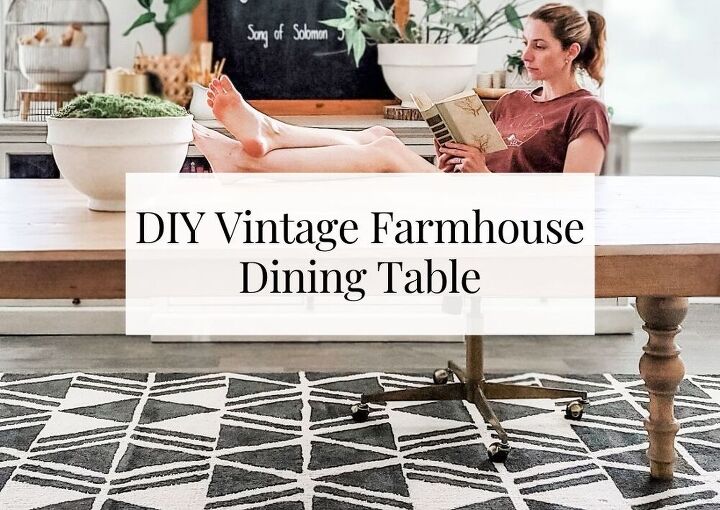





























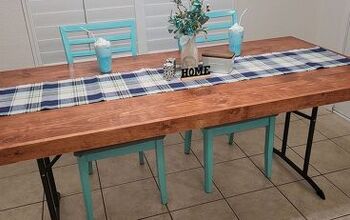

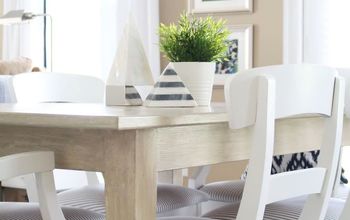
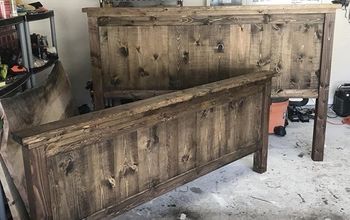

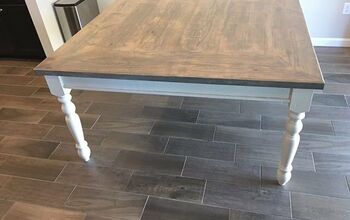
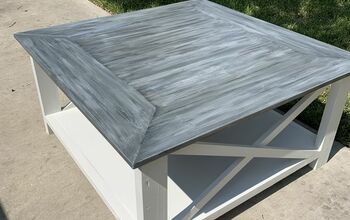







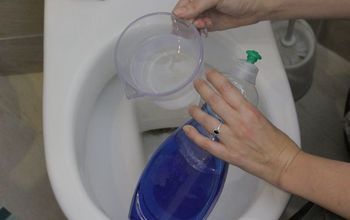
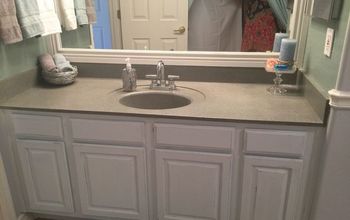
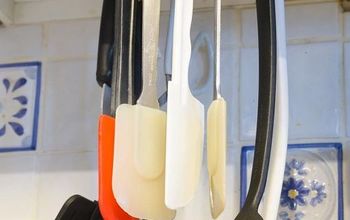

Frequently asked questions
Have a question about this project?
Lovely table and great video! I have an odd question - when you attach your tools to your shop vac - do you have the vac running? I'm not sure if the air pushing out from the tool is enough to push the dust down the hose, or if the vac needs to be running. Have tried finding the answer to this online, but no luck. I fried my last shop vac - I left it running while using the tools. Wondering if that's what damaged it. Any insight would be much appreciated! :)